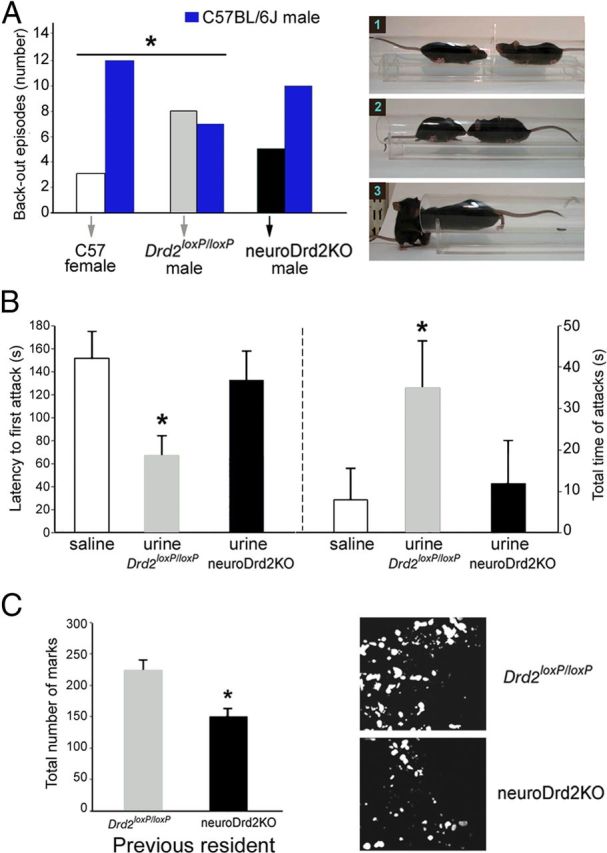Figure 5.

Urine from adult neuroDrd2KO males fails to promote social and territorial behaviors. A, Left, C57BL/6J adult females, Drd2loxP/loxP adult males and neuroDrd2KO adult males were challenged with C57BL/6J adult males in a social-dominance tube test. Fifteen trials were performed for each genotype. The behavior of C57BL/6J males was significantly different when confronting C57BL/6J females compared with Drd2loxP/loxP males (one-tailed χ2 *p < 0.05). C57BL/6J males confronting neuroDrd2KO males showed an intermediate phenotype because their behavior was not different from that observed when confronting either C57BL/6J females or Drd2loxP/loxP males (one-tailed χ2 p > 0.05). Right, Representative images of a typical test: (1) two mice approaching the center of the tube, (2) mutual inspection, and (3) the mouse on the right pushes the other out. B, Intruder-resident test. Isolated C57BL/6J adult male residents (n = 18) were challenged with C57BL/6J castrated males swabbed on their backs and genital areas with saline (n = 6), urine from Drd2loxP/loxP adult male mice (n = 6), or urine from neuroDrd2KO adult males (n = 6). Left, latency to the first resident's attack (one-way ANOVA [OWA]: F(2,15) = 4.55, p < 0.05). *p < 0.05 compared with saline, post hoc Fisher analysis. Right, total time spent attacking (Kruskal-Wallis OWA on ranks: H = 6.65 with 2 degrees of freedom, p < 0.05). *p < 0.05 compared with saline, post hoc Dunnett's comparison. C, Scent marking test. Left, C57BL/6J adult male mice were challenged in a cage previously occupied by a Drd2flox/flox (n = 5) or a neuroDrd2KO (n = 8) adult male mouse. Urine marks made by the visitor during 5 min were counted under UV light (OWA: F(1,11) = 14.66, *p < 0.005). Right, two representative examples of spotted urine are shown. Bars represent the mean ± SEM.
